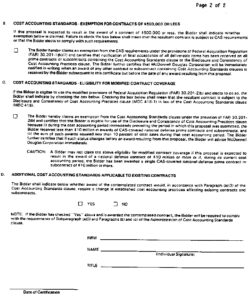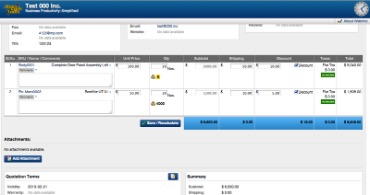Content

Securities are offered through John Hancock Distributors LLC, member FINRA, SIPC. With so many types of plans out there, it can be difficult to determine which is best for growing your wealth into retirement. A wealth advisor can help you decide whether or not to open a qualified or nonqualified retirement with your employer. Salary portions that an employee opts to contribute to a nonqualified plan are part of the company’s assets and can be seized by creditors if the company files for bankruptcy. Some nonqualified plans allow you to save for certain future events like your child’s education.
- Similar to a traditional IRA, a Roth IRA is a nonqualified retirement plan, as employers do not offer it to employees.
- For example, qualified plans might not allow as much money to be invested as a high income earner would need to put in to meet his retirement goals.
- For supplemental wages exceeding $1 million, the rate is 35%.
- This means you do not have to set the money aside.
- Employees eligible to participate in qualified retirement plans must be allowed to enroll, and benefits must be equal for all participants.
- NQDC plan funds are not separated from your general business funds.
- Nonqualified plans are also subject to FICA tax at the time they defer the money.
Prior to Section 409A being adopted in 2004, NQDC plan practices varied, with some plans improperly allowing employees to both defer income and have control over their benefits. Section 409A requires NQDC agreements to be agreed to in writing. Failure of a NQDC plan to comply with Section 409A can result in taxes and penalties to an employee. Insurance related retirement investments also include group carve-out plans, which provide life insurance benefits without the downside of creating tax consequences for the employee.
Split-dollar life insurance plans
Think of a qualified annuity as a 401 or IRA because they all have annual contribution limits. You do not have to open up enrollment to all your employees for nonqualified plans. In fact, many businesses offer https://quick-bookkeeping.net/wpc-quantitative-precipitation-forecasts/ nonqualified plans only to their key or highly compensated employees. Most pension plans are considered qualified retirement plans, including SEP plans and salary reduction simplified employee pension plans.
Qualified and nonqualified are the two types of deferred compensation plans. To keep your business legal, learn how qualified vs. nonqualified plans differ. A Keogh plan is a qualified retirement plan established by the Self Employed Individuals Tax Retirement Act of 1962, otherwise known as the Keogh Act, or HR-10. Keogh plans may be set up by self-employed persons, partnerships, and owners of unincorporated businesses as either a defined benefit or defined contribution plan.
What Is a Nonqualified Retirement Plan?
A qualified retirement plan is included in Section 401 of the Tax Code and falls under the jurisdiction of ERISA guidelines. Employee and/or employer contributions are distinct from the employer’s balance sheet and are owned by the employee. There are more restrictions to a qualified plan, such as limited deferral amounts and employer contribution amounts. The tax implications for the two plan types are also different. With the exception of a simplified employee pension , individual retirement accounts are not created by an employer and thus are not qualified plans. They may be structured as an IRA or as a 401 plan.

A defined contribution plan is a qualified retirement plan in which the contribution is defined, but the ultimate benefit to be paid is not. In such plans, each participant has an individual account. The benefit at retirement depends on the amounts contributed and on the investment performance of that account through the years. In such plans, the investment risk does not have to but usually rests solely with the employee because of the opportunity to choose from a number of investment options. These plans take many forms and are known by various names such as money purchase, profit sharing, 401, or 403 plans.
Are the “top-hat” plan participation and reporting rules still a good fit?
The reporting requirements for unqualified plans are simpler– employers only need to file a single form with the U.S. Group carve-out plans replace group term life insurance coverage of more than $50,000 with an individual universal life insurance policy. The plans provide extra coverage to help the employee avoid taxes on group life insurance over $50,000.
Qualified plans qualify for certain tax benefits and government protection. Recall the eligibility requirements for simplified employee pension plans. 401 Plan Fees Disclosure Tool – Model comparative chart for disclosures to participants of performance and fee information to help them compare plan investment options. Understanding Retirement Plan Fees And Expenses – Provides information about plan fees to help you evaluate your plan’s investment options and prospective providers.
Learning the differences between qualified and nonqualified retirement plans can help you get the most of your retirement savings. Nonqualified retirement plans enable highly compensated employees to save more money for retirement than they could in a qualified plan. Qualified plans are subject to annual contribution limits. They also have discrimination tests in place, which ensure that HCEs do not contribute substantially more to their retirement plans than the company’s average employee. Often such tests reduce the maximum contribution HCEs can make.
They are non-qualified because they fall outside the Employee Retirement Income Security Act guidelines and are exempt from the testing required with qualified retirement savings plans. Nonqualified deferred compensation plans are not governed by ERISA, so they have more flexible rules and fewer protections for your employees. Although both plans defer compensation, qualified and nonqualified deferred compensation plans are very different. For a more detailed look at the features, characteristics, and types of qualified and nonqualified plans,go here. Susan M. Tillery, CPA/PFS, AEP® , is President & CEO of Paraklete® Financial, Inc. Paraklete® provides integrated fee-for-service personal financial planning and virtual family office services, without asset management or product sales.
Most of us are familiar with 401s, which is a type of qualified retirement plan. But to attract and retain key employees and senior management, employers sometimes offer nonqualified retirement plans designed for high-earning executives. These plans don’t follow Employee Retirement Income Security Act guidelines and offer many opportunities for customization as a result, but can also pose some extra risks. Here’s what you should know if you’re offered a nonqualified retirement plan. Contributions to nonqualified retirement plans are typically nondeductible for the employee. The employee must pay taxes in the year contributions are made.
- If you have a plan at work, then you likely have a qualified retirement plan.
- A 401 plan generally offers participants an opportunity to direct their account contributions to a broad range of investment options from conservative risk to aggressive risk.
- Many workers are familiar with the concept of retirement plans such as Roth IRAs, 401s, and other forms of tax sheltered retirement accounts.
- The program addresses all areas of the Personal Financial Specialist Body of Knowledge and successful completion, with related experience, permits participants to obtain the PFS Credential.
- Paraklete® provides integrated fee-for-service personal financial planning and virtual family office services, without asset management or product sales.
- 1Certain taxes may apply if the sponsor company is subject to the alternative minimum tax.
Qualified and nonqualified both have different tax implications for both employees and employers. Both programs can be useful for employers in attracting and retaining employees depending on different situations. Careful consideration should be used in determining which type an employer chooses in establishing a retirement program for their employees. A qualified plan is established by an employer to provide retirement benefits for employees and their beneficiaries.
NON-QUALIFIED PENSION PLANS
There is minimal reporting required for non-qualified retirement plans. You are only have to file a short form with the U.S. Employers that sponsor a nonqualified plan can address the retirement readiness Qualified Retirement Plans Vs Nonqualified Plans of these key employees by providing an additional way to save. Nonqualified plans also address other organization goals of employers, including the ability to recruit, retain and reward top talent.